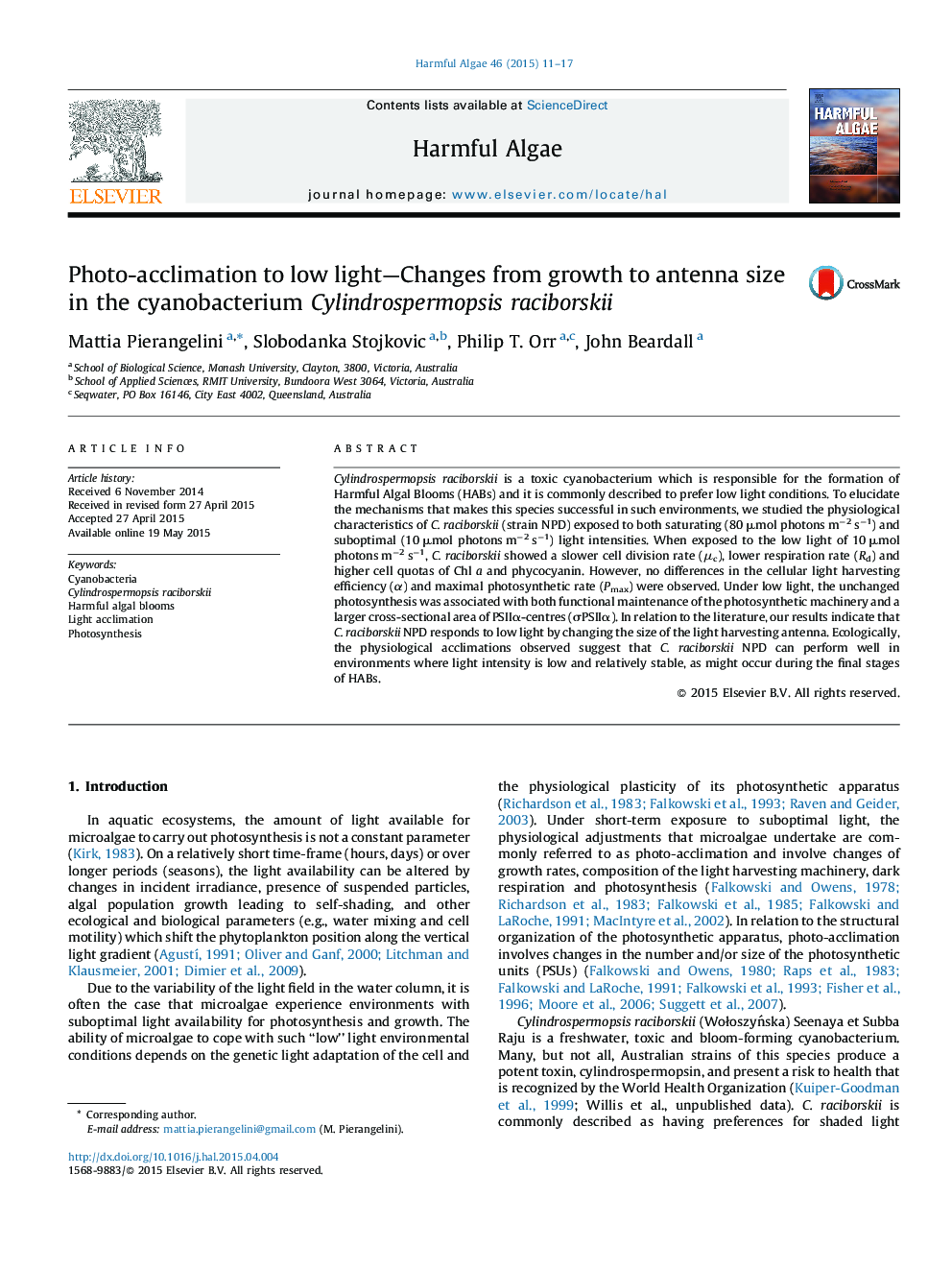| کد مقاله | کد نشریه | سال انتشار | مقاله انگلیسی | نسخه تمام متن |
|---|---|---|---|---|
| 4545253 | 1626925 | 2015 | 7 صفحه PDF | دانلود رایگان |

• Changes of Cylindrospermopsis raciborskii cell division and dark respiration rates are coupled.
• Changes of cell biovolume could affect the cell ability to harvest light.
• C. raciborskii exposed to suboptimal light intensity maintains its photosynthetic capacity.
• C. raciborskii uses PSII antenna size changes as photo-acclimation mechanism.
• C. raciborskii seems to prefer environments where light intensity is relatively low and stable.
Cylindrospermopsis raciborskii is a toxic cyanobacterium which is responsible for the formation of Harmful Algal Blooms (HABs) and it is commonly described to prefer low light conditions. To elucidate the mechanisms that makes this species successful in such environments, we studied the physiological characteristics of C. raciborskii (strain NPD) exposed to both saturating (80 μmol photons m−2 s−1) and suboptimal (10 μmol photons m−2 s−1) light intensities. When exposed to the low light of 10 μmol photons m−2 s−1, C. raciborskii showed a slower cell division rate (μc), lower respiration rate (Rd) and higher cell quotas of Chl a and phycocyanin. However, no differences in the cellular light harvesting efficiency (α) and maximal photosynthetic rate (Pmax) were observed. Under low light, the unchanged photosynthesis was associated with both functional maintenance of the photosynthetic machinery and a larger cross-sectional area of PSIIα-centres (σPSIIα). In relation to the literature, our results indicate that C. raciborskii NPD responds to low light by changing the size of the light harvesting antenna. Ecologically, the physiological acclimations observed suggest that C. raciborskii NPD can perform well in environments where light intensity is low and relatively stable, as might occur during the final stages of HABs.
Journal: Harmful Algae - Volume 46, June 2015, Pages 11–17